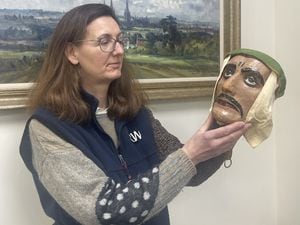Staffordshire council leader vows to close pay gap
A council leader has vowed changes will be made after a report found men working at the authority are on average paid more than their female colleagues.

Staffordshire County Council’s gender pay gap report revealed men at the authority are paid on average 12 per cent more than women.
Men are paid £15.97 per hour on average, while women are paid just £14.06.
Under new government legislation, all employers with more than 250 employees must publish a gender pay gap report by March 30 to show the difference between the average hourly pay of men and women.
The council say the pay gap is due to more men being employed in higher-paid senior roles, and there is no difference between the pay of men and women employed in the same jobs within the authority. Findings show there are more women in the authority’s lower pay brackets, with men only outnumbering women in the top three pay categories.
In the top category, men outnumber women by nine to one.
Council leader Philip Atkins said providing information on the pay gap would encourage more organisations to take steps to close it.
“We fully support the Government’s gender pay reporting legislation, as it provides transparency on pay and encourages employers to act faster to close the gap,” he said of the current government drive.
“At the county council, just over three in four of our employees are women, yet there are more men in higher-paid roles.
"Clearly this needs to change, so we need to do some further analysis to understand the causes of the pay gap in Staffordshire and what we can do to close it.”
The authority’s pay gap is, however, lower than both the national average of 17.4 per cent and the public sector average of 17.7 per cent in favour of men.
Councillor Atkins added: “We’re currently developing a new workforce strategy for our organisation and this will look at what steps we can take, from promoting our family-friendly policies such as flexible and smart working, to talent and succession planning.
"We need to ensure everyone who works for us has the same opportunities to progress in their career.”
John Henderson, the council’s chief executive, said: “Staffordshire County Council is committed to the principle of equal opportunities and equal treatment for our employees.
"Our workforce is the greatest asset we have for improving the lives of Staffordshire people and it’s our aim to ensure that all employees have the skills, tools and confidence to do their jobs well.”





